A Visit to the Chios Mastic Museum
Toula has prepared an amazing breakfast for us this morning. This feast includes thick creamy yoghurt with Toula’s homemade rose petal spoon sweets, boiled eggs and a selection of local cheeses, ham and cheese sandwiches, freshly baked fruit sponge cakes and some sweet and savoury pastries. This is more than enough to set us up for the day!
This is our plan for today. Whilst on Chios we will mainly use the bus service to get around. On Chios the green bus line that will take you to destinations across the island runs from Monday to Friday. Two of our four nights in Pyrgi will run across the weekend so we have planned our outings around this.
Today is Saturday and at the top of our list to visit is the Chios Mastic Museum. Having visited it before I know that the museum sits on top of a hill. Google Maps tells us it’s less than 3 kilometres so it sounds pretty easy.
We thank Toula for breakfast and head up to the room to get our bags. But there’s a problem. Peter who is usually so meticulous about checking keys and the room before we leave, has shut the door with the key inside. He had mistakenly thought that the door would open with the turn of the knob – but that’s not the case.
We walked shame-faced back down the stairs to tell Toula the news. She has a spare key but it won’t open the door because the other key is still in the lock! I’m mortified (and Peter even more so!). We go outside to see if there is an open window and even if there is, it is a long way up. These 13th century houses were built to keep invaders out! Oh what to do! Toula tells us that she will phone a man who has done work on the house for her before. Of course, we tell her that we will cover any costs for his work but she waves that suggestion away with a flapping of her hand.
Toula makes the call and tells us that he will come but she doesn’t know when – so we sit and wait in nervous anticipation. Surprisingly, the man arrives twenty minutes later. Toula, Peter and the man head back upstairs whilst I keep out of the way and pray. It isn’t long before I hear a loud crashing sound. I hope to God that he isn’t attempting to batter the door down! A few minutes later he returns to his moped box to collect some tools. A large screwdriver and a hammer are his weapons of choice which now makes me seriously worried for the door.
There was some loud banging amidst some chattering from Toula and Peter. All I could do was sit and wait. Just 5 minutes later they all return outside and exclaim that the job has been done. The man had been able to lever out a window pane in the door and reach inside to retrieve the key without damaging anything. Phew! What a relief.
Toula tells us that the man didn’t charge anything for his services which I’m not 100% sure about but she wouldn’t hear of any payment anyway. We apologise to Toula once again and then prepare to go on our merry way.
We exit Pyrgi village by passing through the main square and the smaller square at Kato Porta Cafe. As a fortified town, there were two main entrances into the village which were secured by iron gates. Close to the cafe is a section of the original gate mounted on the wall. Apparently a local resident found it down a well and in 2022 it was restored and located in what is thought to be its original place. Blink and you’ll miss it!
We’re now on the main road. On both sides there are large swathes of agricultural land. One side has nearly plotted rows of grapevines next to clusters of olive trees planted in a more random manner. There are also vegetable patches filled with either cardoon or artichoke – it’s hard to tell which until they grow bigger (and I’m no horticulturalist!). On the other side are acres of mastic trees stretching up the hill to the Mastic Museum which we can just about see on the horizon. Dotted around the surrounding hillsides are ancient watchtowers, built to spot invaders intent on stealing the valuable mastic.
We take a side road to the right and our ascent begins. The tarmac road snakes its way towards our destination, steeper in some parts than others. Of course, there isn’t a pavement to walk on but there isn’t much traffic here thankfully. The wildflowers and herbs such as fennel, thyme and sage grow abundantly along the wayside. We both enjoy picking and smelling the leaves as we go along. The museum has now disappeared from sight as we are almost directly under it.
About halfway up we see a sign that tells us that no photographs are allowed in this area. We must be approaching a military zone though heaven knows where because it all appears agricultural. Finally, we make it to the top of the hill and are rewarded with fantastic views over Pyrgi. I didn’t realise until now how large the village is. Pyrgi is one of the largest villages on Chios though you certainly don’t get a sense of its scale whilst walking its narrow alleyways.
The building of the Mastic Museum itself is impressive. As you approach from the road above, you will see that the museum is set into the hillside, almost blending into it. It has two main wings that run parallel to each other and are constructed from steel, wood, natural stone and concrete. Huge panes of glass reflect images of the surrounding landscape – it’s truly spectacular.
Below the museum is an outdoor exhibition space in the form of a short trail that takes you through a small plantation of mastic trees. It’s a great opportunity to see these magical plants up close.
The museum has a shop and a small cafe a perfect place to rest your weary feet after several hours of explorations – and you’ll definitely need to allow several hours to absorb everything this fantastic place has to offer.
The museum is still relatively new. After several years of project planning and securing the funding and partnerships for the project, the construction of the museum began in 2012 and opened its doors to the public in 2016.
Now into the museum itself. We purchase our tickets at just 4€ per person and make our way to the permanent exhibition space. The first section tells the story of the mastic tree and its cultivation. The displays give a representation of what life was like in the rural mastic plantations and of the various stages from cultivation through to harvest. The oral history and stories that have been passed down through the generations are what brings the exhibitions to life.
When I first heard about masticha many moons ago I was fascinated to read that Chios is the only place in the world to successfully produce mastic resin. Why is this? Various genera of mastic tree (also known as Skinos) grow all over the world. However, it’s the Pistacia Lentiscus Chia variety that has been successfully cultivated in the Southern part of Chios. There are many subspecies of Pistacia Lentiscus grown on Chios and the varieties will vary from mastic village to mastic village. It would take a keen eye to spot which one is which. The mixture of arid climate and volcanic soil are ideal growing conditions for the mastic tree. In addition to this, experienced and skilled farmers were able to identify the high-yielding plants. These were used to propagate new generations of tree whilst the weaker and less productive ones were weeded out.
As a keen gardener, I was very interested to discover more about the cultivation of the mastic tree which is an all-year-round pursuit and very labour-intensive. Each season has specific tasks and routines established around the needs of this tree. During the winter the the trees are fertilised, giving them the nutrients they need for the upcoming season. They are also pruned to remove dead branches and to ensure good air circulation. The pruning also helps the resin to dry more quickly.
Propagation also takes place and this is done by a variety of different methods. The first is to cut some of the mid to weaker branches from established trees, strip 3/4 of the branch of their leaves and plant them at an angle in furrows up to 50 cm deep. It sounds simple and it’s incredible to think that new trees may grow from this but it takes a skilled and knowledgeable hand to do this successfully. The other method of propagation is to transplant stolons. I hadn’t heard the term stolon before but a web search describes them as a runner or an aerial roots so I get the picture.
Spring sees further preparation of the soil around the tree. The soil is dug, stones are removed and everything is checked to ensure it is pest-free.
In summer, the ‘table’ is prepared. This is the area around the base of the tree. The ground is levelled by sweeping it with a brush and a circle of white calcium carbonate is spread in a thin layer. This helps to dry the resin as it falls from the tree and also makes it easier to see when collected in.
Now it’s time to wake the trees up from their dormancy. This is done by making a few deep cuts at the base of the tree with a tool called a kentitiri. This sends a signal telling them to produce more resin to heal their wounds. During August and September the process known as ’embroidering’ begins. This is where more cuts are made on the tree though more shallow and shorter than the initial cuts. Unlike the first cuts, these are much less brutal. The cuts are done over a period of time starting with a few two to three times a week. Depending on the age of the tree it may receive up to 100 cuts during this cycle. The trees will begin to weep their mastic tears and the farmers are on standby to collect their precious treasure.
Two weeks after the first round of embroidering the first tears are gathered in. There may also be another round of embroidering followed by a further collection two weeks later. The table is now cleaned and this involved sieving the calcium carbonate to collect every last drop of resin. Collection of the resin can start anytime from 3am because direct sunlight can damage it rendering it worthless.
Through winter and the following spring the mastic tree will still produce small bits of resin. So valuable is this product that even the tiniest grains will be collected during a process called kokoloi.
The processing of mastic resin has now been primarily mechanised but when I think of masticha production the image conjured up is of the elderly ladies sitting together with trays of resin, cleaning and grading it all by hand. It’s a task that takes great patience
The history of mastic production in Chios is an interesting one albeit rather complicated. The Venetians, the Genoese and Ottomans all had their fingers in the pie. Rather than outline it all in this post here I’ll leave it for you to come and discover for yourself!
I’ll admit that I’m rather partial to Masticha liqueur. I just love the taste. It’s not the sweetness of it because I’m not a fan of sweet liqueurs but it’s the unique taste that really appeals to me. I’m not sure how I’d describe the taste of masticha but when I asked Peter he said that it tastes like the smell of church and that description fits quite well.
Many claims have been made about the medicinal properties of masticha and even Hypocrates used masticha to cure stomach problems. Scientific research shows that masticha has antibacterial properties and is also antiinflammatory. It is also said to be good for gum and teeth health, a treatment of Helicobacter Pylori and also able to control blood sugar and cholesterol levels. As someone who has problems with my ‘innards’ I was keen to see if it could help. On my last visit to Chios, I purchased a bottle of mastic oil and was advised to add two drops to two litres of water and drink this every day. I’m not very good at remembering to do this but as my gastrointestinal issues worsen with time, I pledge to make this part of my daily routine. We’ll see.
Another part of the museum that I found fascinating is the description of a typical medieval mastic village home. It helped me to understand what Toula’s house would have been like. It is thought that Pyrgi existed in and around the 10th century. Pyrgi may have been a cluster of settlements that eventually merged together to eventually become the fortified town that we see today.
The model in the museum shows that the ground floor was primarily used for keeping animals. Toula had already explained to me that the ground floor window at the front of her house used to be a stable door. When the stone streets were constructed in more recent times, the level was higher than the bottom of the door rendering it useless for this purpose, so it became a window. When you walk around Pyrgi you will notice that many houses have double metal doors that are obviously stable doors.
Typically the first floor would be the living space for sleeping, eating and socialising. There would be an oven and rudimentary cooking facilities someof which may also have been found on the ground floor. The roof space was often used for storing animal feed and grain. The model of the house shows a staircase which would have either had an open roof or been vaulted and is described as a ‘Pounti’ which is translated to Atrium. So this is where Toula’s house gets its name from! To Pounti means the atrium. In the instance of To Pounti, the atrium space is open and leads all the way to what is now their pretty roof terrace. Though more on that another day!
We end our visit by following the trail outside. Once you’ve seen the mastic trees up close you will begin to recognise its form and habit in other places. I realised that I’ve seen mastic trees in many places though not all of them are used for resin cultivation. They can be found along roadsides in many parts of Greece. The sniff test is a useful determining factor – just take a leaf and squeeze it between your fingers and sniff.
Chios Mastic Museum Opening times:
From March 1st through to October 15th:
Daily (except Tuesdays) 10 am-6 pm.
From October 16th through to February 28th:
Daily (except Tuesdays) 10 am-5 pm.
Closed on: Tuesdays, January 1st, Good Friday (until 12 noon), (Greek Orthodox) Easter Sunday, May 1st, July 22nd (local patronal feast), August 15th, December 25th and 26th.
Standard entrance fee: € 4,00
Concessionary ticket: € 2,00.


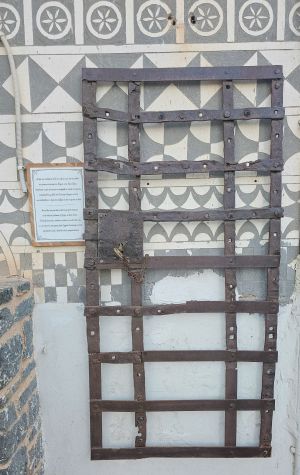
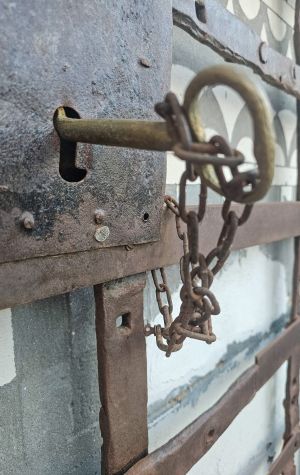
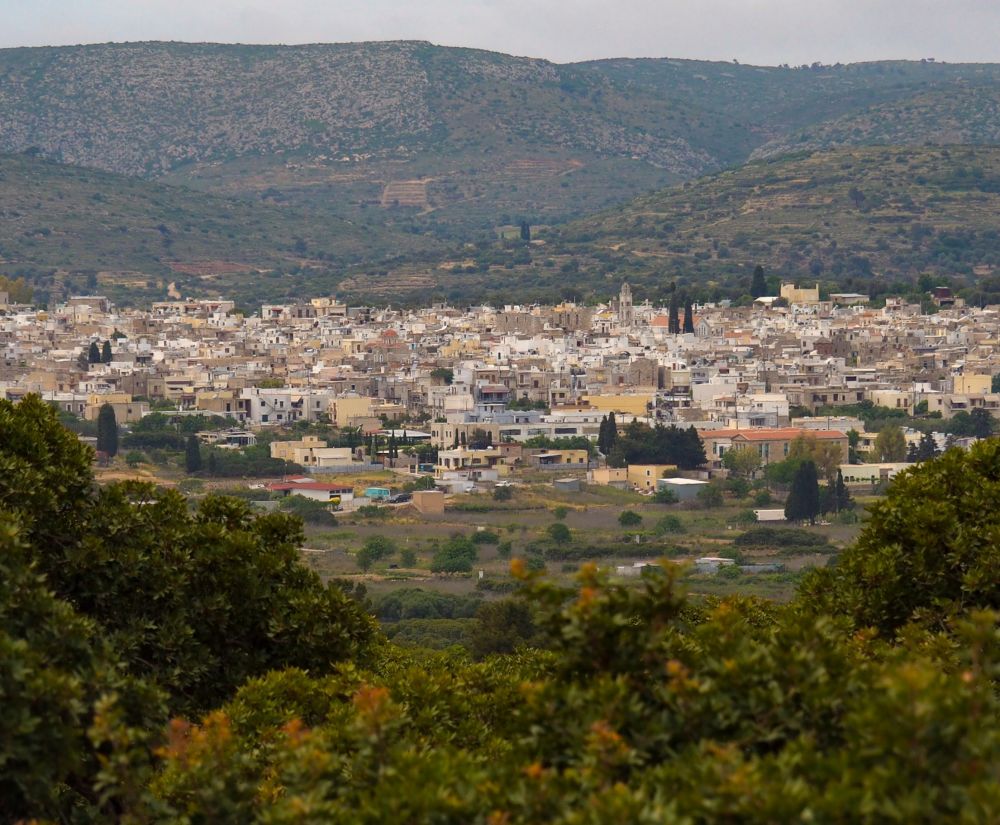
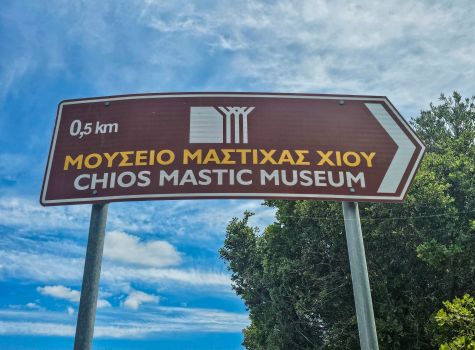
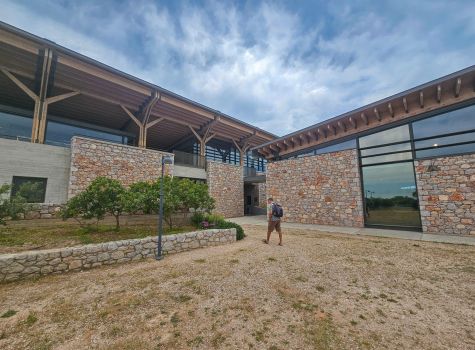
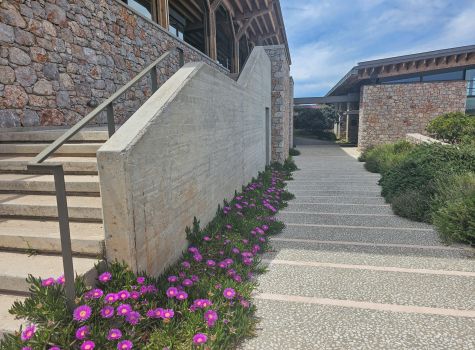
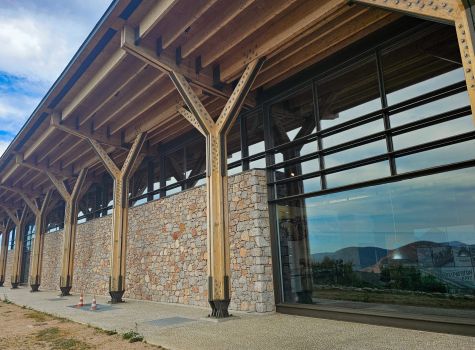












Very interesting Stephanie – your adventure with the door made me laugh as well!!
Honestly I can’t take Peter anywhere! 😂